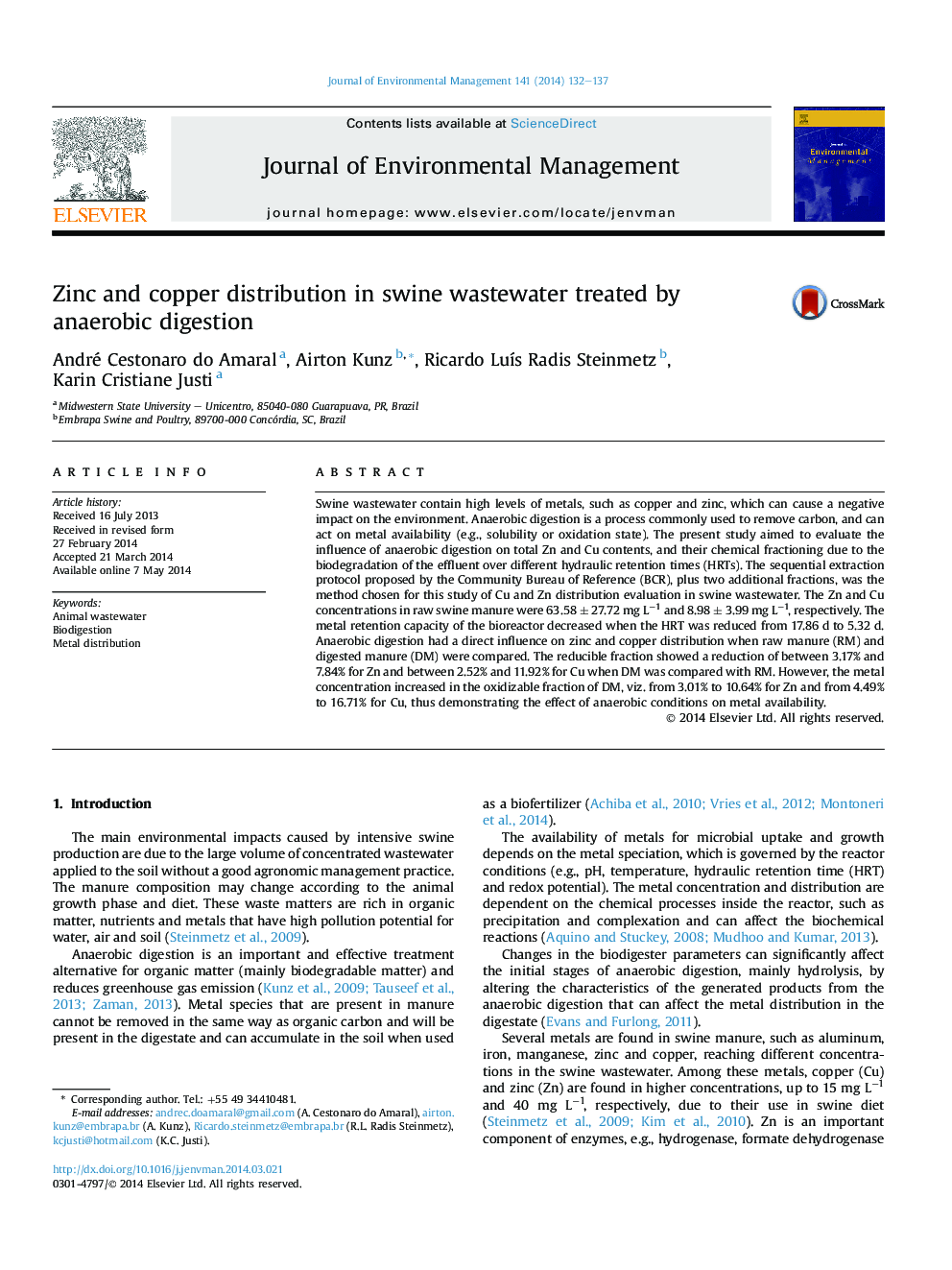| Article ID | Journal | Published Year | Pages | File Type |
|---|---|---|---|---|
| 1055916 | Journal of Environmental Management | 2014 | 6 Pages |
•Biodigestion can modify the distribution of metals in swine wastewater.•Changes in metal distribution are directly related to HRT.•Anaerobic digestion increases metal concentration in the oxidizable fraction.
Swine wastewater contain high levels of metals, such as copper and zinc, which can cause a negative impact on the environment. Anaerobic digestion is a process commonly used to remove carbon, and can act on metal availability (e.g., solubility or oxidation state). The present study aimed to evaluate the influence of anaerobic digestion on total Zn and Cu contents, and their chemical fractioning due to the biodegradation of the effluent over different hydraulic retention times (HRTs). The sequential extraction protocol proposed by the Community Bureau of Reference (BCR), plus two additional fractions, was the method chosen for this study of Cu and Zn distribution evaluation in swine wastewater. The Zn and Cu concentrations in raw swine manure were 63.58 ± 27.72 mg L−1 and 8.98 ± 3.99 mg L−1, respectively. The metal retention capacity of the bioreactor decreased when the HRT was reduced from 17.86 d to 5.32 d. Anaerobic digestion had a direct influence on zinc and copper distribution when raw manure (RM) and digested manure (DM) were compared. The reducible fraction showed a reduction of between 3.17% and 7.84% for Zn and between 2.52% and 11.92% for Cu when DM was compared with RM. However, the metal concentration increased in the oxidizable fraction of DM, viz. from 3.01% to 10.64% for Zn and from 4.49% to 16.71% for Cu, thus demonstrating the effect of anaerobic conditions on metal availability.
